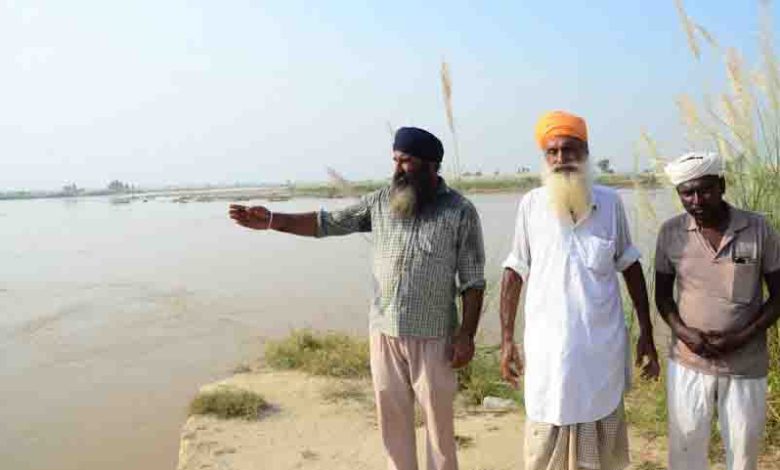Punjab: Security threat, damaged walkway in Paddal a matter of concern

Punjab: The forecast of heavy rainfall on October 6-7 in the catchment areas of the Ravi and Beas rivers in Punjab, Jammu and Kashmir, and upper Himachal Pradesh has alarmed the Punjab government. The state government has begun releasing excess water from the Ranjit Sagar Dam reservoirs into the Ravi River, while the Pong Dam continues to release water into the Beas River. In August-September, the state experienced some of the worst floods in recent history, killing 59 people and killing thousands of livestock, damaging thousands of homes, and destroying crops on nearly 500,000 acres. The India Meteorological Department (IMD)’s forecast of heavy rainfall in the coming days has alarmed officials of the Water Resources Department. Punjab is expected to receive 110 mm of rainfall in the coming week, about 120 mm in the Jammu region, and an average of 16-180 mm in Himachal Pradesh. Top officials of the State Water Resources Department, including chief engineers and technical experts, held a virtual meeting today with top officials of the International Monetary Fund (IMD) to discuss and understand the weather patterns and formulate a flood control strategy. According to IMD data shared with the state government, heavy to very heavy rainfall is expected in Amritsar, Tarn Taran, Gurdaspur, Pathankot, Ropar, Jalandhar, Ludhiana, Moga, Mansa, Barnala, and Bathinda on October 6-7. It is learnt that top officials of the Bhakra Beas Management Board have also begun internal discussions to formulate their strategy. As part of this strategy, the state government has begun releasing more water from the Ranjit Sagar Dam reservoir since this afternoon to keep the dam’s water level well below the danger mark, so that the expected increased inflow into the dam during the upcoming heavy rainy season (October 6-7) does not force them to suddenly release water into the rivers, which could once again cause flooding in the lower reaches of Punjab. The outflow of water from the Ranjit Sagar reservoir has increased from 20,362 cusecs yesterday to 37,686 cusecs as of 1 pm today. The water level at the dam is 523.53 feet, still 4 feet below the danger mark. Officials are concerned that in case of heavy rains, excess water is likely to flow into the Ravi River through 22 small rivers flowing into the Ravi River from the hills. An official said that although the water level at the Pong Dam is below the danger mark, the outflow of 17,171 cusecs of water from the dam will continue. Officials have also predicted a rise in the water level of the Sutlej River due to heavy rains in the state. Meanwhile, the Punjab government has written to the Chief Engineer of Haryana’s Irrigation and Water Resources Department, informing him of the heavy rainfall expected in the coming days and urging him to regulate the release of water from the Kaushalya Dam on the Ghaggar River so that the dam’s reservoir has sufficient space to store the excess water expected in the coming weeks. This will prevent flooding in the downstream areas of the Ghaggar River in Punjab.





